Farmers and gardeners love earthworms. Earthworms consume organic matter and turn it into rich humus that plants love. They also loosen the soil and add oxygen, which plants need to thrive. However, there’s more to the story. A balanced look at the pros and cons of earthworms leads to important discoveries about their role in larger ecosystems.
Getting to Know Earthworms: An Overview
In many parts of North America, native worms couldn’t survive during the last Ice Age. The forests returned when the masses of ice that covered Canada and the eastern United States receded, but the worms didn’t make it.

For thousands of years, forests and wildlife evolved without earthworms, and the forest floors were covered in leaf litter that supported new types of life. Since early settlers brought earthworms to North America in the last several hundred years, they have been expanding their range.
In many ways, earthworms are now an invasive species, consuming large amounts of organic matter. Their presence has changed the nutrient cycles in the ecosystems they inhabit, reducing biological diversity and negatively impacting some types of wildlife.
Basic Biology of Earthworms
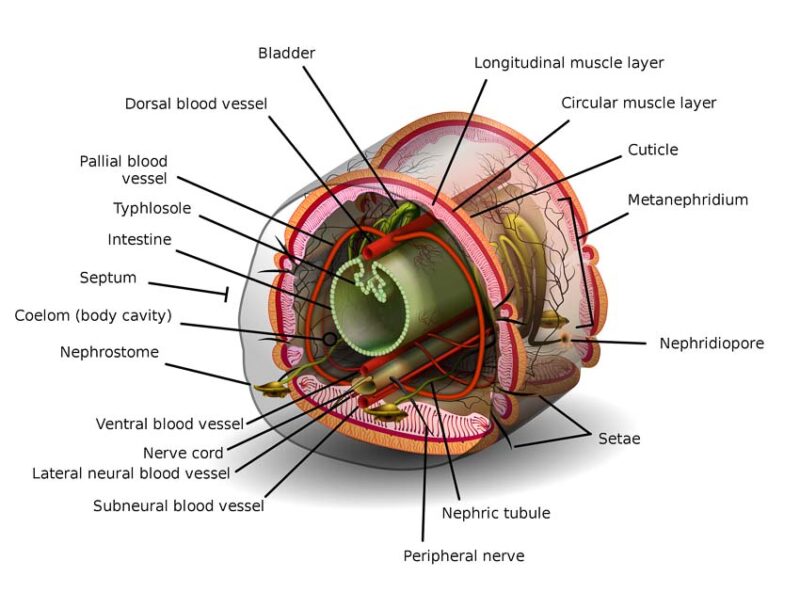
Earthworms are more closely related to leeches than any other well-known creatures. Both leeches and earthworms are annelids , a large classification of segmented worms with over 22,000 species.
Learn about how earthworms can help benefit your soil while prepping your lawn.
The structure of an earthworm’s body is basically a tube within a tube, and its digestive system runs the entire length of its body. Earthworms have no skeleton, but they are bilaterally symmetrical like many species.
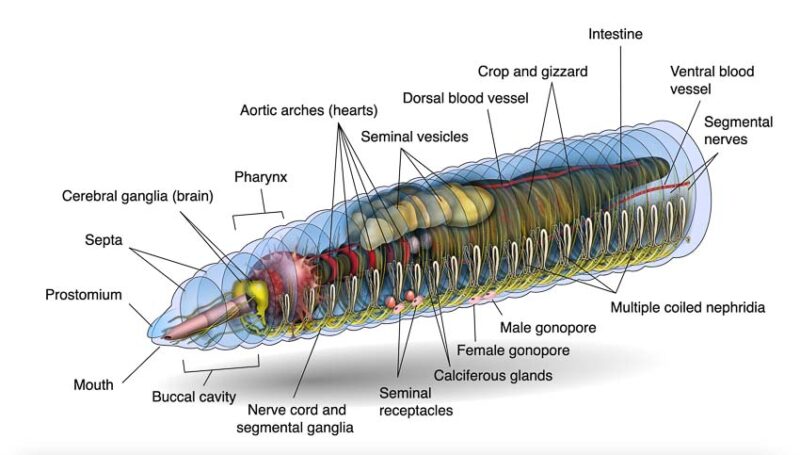
They use small, comb-like hairs known as setae combined with the contraction and relaxation of their muscles to push and pull their way through the soil.
Earthworm Identification
Before exploring the pros and cons of earthworms, it’s important to become familiar with various types.
There are about 6,000 species of earthworms globally. Moreover, there are roughly 182 known species of earthworms in North America.
Worms live all over the world, and in every type of environment, from forests and jungles to grasslands. The only places they can’t be found are deserts and regions that are frozen all year.
Depending on where they live in the soil, there are three main groups of earthworms.
- Leaf litter dwellers- reddish-brown worms up to 3 inches long
- Soil dwellers- light gray with a pink head, live in the top 20 inches of soil, can get up to 5 inches long
- Deep burrowers- can live as deep as 6 feet below the surface
Common earthworms (Lumbricus terrestris), known as night crawlers, rain worms, and angleworms, are deep burrowers.
Red wigglers (Eisenia fetida), another well-known species typically referred to as an earthworm, are surface dwellers, which is why they are easy to raise in shallow boxes.
The largest worm in North America is the Oregon giant earthworm (Driloleirus macelfreshi), which grows over 3 feet long. Its range is limited due to its intolerance for different soil types.
Earthworm Reproduction

One of the most interesting things about earthworms is that they are hermaphrodites, but most still need a mate to reproduce. Individual worms have both male and female reproductive organs, with female and male genital pores.
Earthworms exchange sperm when they mate, fertilizing both worms’ eggs.
Life Cycle of Earthworms
It takes about 27 days before earthworms lay eggs after breeding. From 1 to 20 eggs are secured in a light-colored cocoon made of mucous, which turns to a deep amber color as the eggs mature. The eggs usually hatch about three to four weeks after they are laid.
Depending on the species, it takes earthworms anywhere from 10 to 55 weeks to mature, but some types, like red wigglers, reach adulthood in as little as 40 to 60 days.
Earthworms are surprisingly long-lived. Amazingly, common earthworms can live eight or nine years, and there are reports of earthworms living as long as 20 years.
City-dwelling earthworms aren’t so lucky. Due to soil changes and predators, they are unlikely to live longer than a couple of years.
Pros and Cons: The Ecological Role of Earthworms
When it comes to the pros and cons of earthworms, they are considered an invasive species. However, they play an important ecological role as a decomposer of organic matter.
Improving the Soil
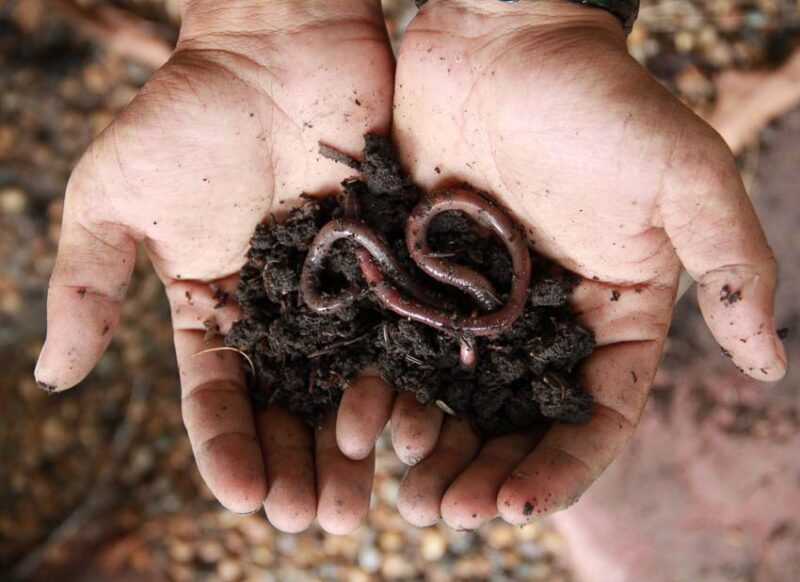
Earthworms improve the health of the soil in several different ways, and many farmers and gardeners recognize the relationship of soil health to the number of earthworms present.
Here are the ways that earthworms improve the soil:
- Aerate the soil by loosening soil particles and creating pathways for air to flow.
- Breaking up compacted soils to allow better water infiltration and improve drainage.
- Adding hummus to increase the water-holding capacity of the soil.
- Improving soil fertility with nutrient cycling.
- Accelerating the removal of contaminants in the soil.
Earthworms as Decomposers
Earthworms feast on more than just dead plants. They are one of many species that live in the soil that decompose dead animals and fecal matter. This critical role as a decomposer turns decaying matter into worm castings that plants can use to grow. It might seem gross, but it’s a good thing they do it.
Natural Predators of Earthworms
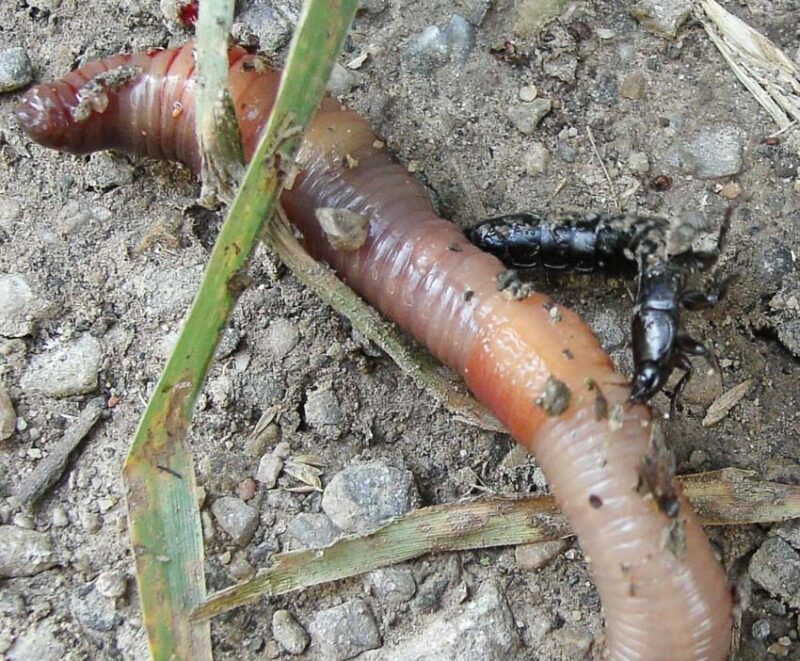
It’s not just fish that like earthworms. Most fish aren’t likely to encounter a worm unless it’s on the end of a hook, but several species of animals that live on land are natural predators of earthworms.
Earthworms are a food source for birds, insects, reptiles, and carnivorous animals. As soon as earthworms emerge from the soil, many species are ready to eat them. Some animals, like skunks and raccoons, will even dig into the ground to find earthworms.
Pros and Cons of Earthworms
The Pros
Before hitting on the cons of earthworms, there are several pros. Having earthworms in your yard improves the health of your lawn and garden, and it can improve plant health so you don’t have to use pesticides and other harsh chemicals. Learn more about the benefits and advantages of having earthworms in your backyard.
Earthworms as Natural Soil Improvers
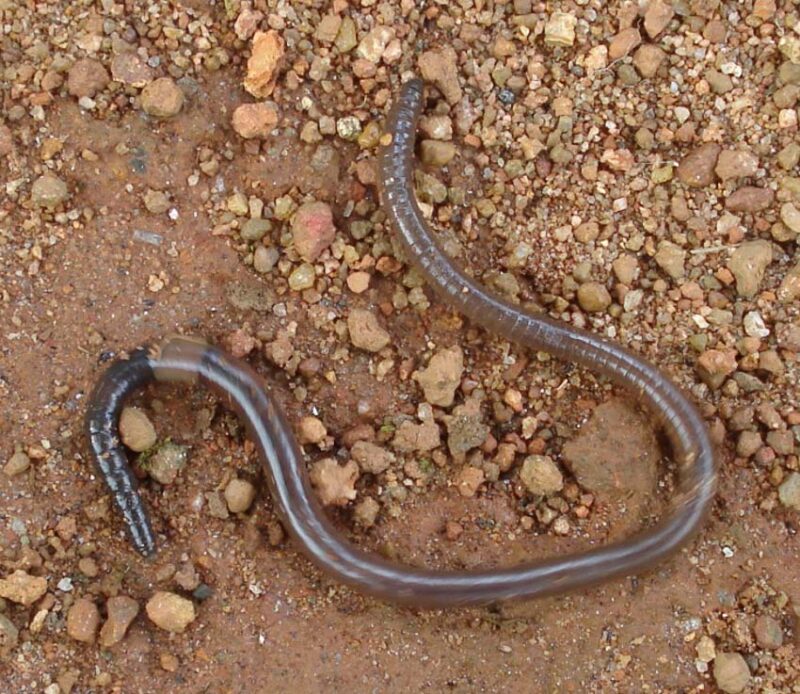
Another of the pros of earthworms is that they are natural soil improvers. The best way to put earthworms in your lawn is to put them on the ground and cover them with leaf litter, compost, or manure.
Pros of Earthworms with Plant Growth and Health
Earthworms are so beneficial to plant growth and health that adding them to the soil around diseased and dying plants will bring them back to life.
When earthworms go to work on your soil and improve the structure, they create all the right conditions for healthy plant growth. Whether you’re growing a lawn, a garden, or a flower bed, your plants need loose, aerated soil that drains well and has adequate nutrients.
Microbes in the soil make nutrients available to plants by changing the chemical bonds of specific nutrients that plants need. If your soil has no signs of microbial life, it’s less likely to grow healthy plants.
How Earthworms Help Your Lawn
Healthy soil is the foundation of a lush, green lawn, and healthy soil contains earthworms. When your soil is rich in organic matter, it gives earthworms and other soil microbes something to eat.
Earthworms feast on the thatch in your lawn.
Thatch is the dead grass and roots that accumulate on top of the soil. Excess thatch makes it hard for the soil to absorb water, and it also harbors pests and diseases.
When earthworms take care of the thatch in your lawn, you don’t have to use as many pesticides and fungicides. Additionally, it puts the nutrients from the dead grass back into your soil where your lawn can use it.
The Cons of Earthworms
Even with all the wonderful pros of earthworms, there are still some cons. For instance, too many of them in your soil can create problems.
Learn more about the disadvantages of an earthworm infestation in your lawn.
Potential Damage to Gardens and Lawns
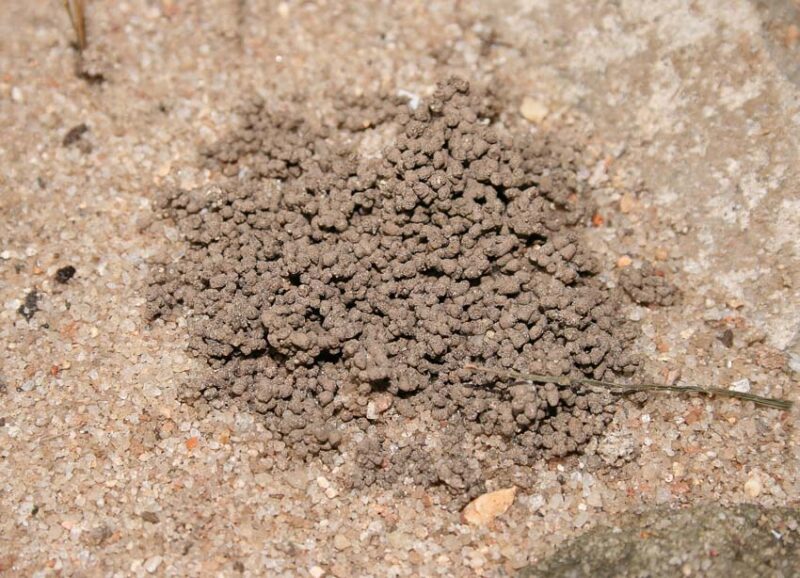
Too many earthworms in your lawn and garden will attract pests. These include skunks, raccoons, voles, moles, gophers, and armadilloes.
Some animals can tear up a lawn digging for snacks; others, like voles and gophers, will eat your vegetables, too.
Worm castings are one of the main drawbacks of having too many earthworms on your lawn. Many people find worm castings unsightly, and in heavy clay soils, earthworm castings cause a sticky mess.
Negative Impacts of Earthworms on Native Ecosystems
Looking at the pros and cons of earthworms, another negative aspect has to do with some ecosystems. These comprise settings like forests, where earthworms cause problems by changing the soil structure. They also cause erosion.
Earthworms might be good for the tomatoes in your garden, but they contribute to declining biodiversity in some areas. Delicate plants like trilliums and orchids can’t grow in soils that earthworms have amended.
Instead, earthworms improve the soil for invasive plants that compete with native species, like noxious weeds, including buckthorn and hedge nettle. In addition, earthworms eat seeds of native plants, and the overall effect is cumulative.
The more earthworms persist in certain ecosystems, the more damage they do.
Managing Earthworm Populations in Your Garden
How do you maintain a proper balance of earthworms in your garden? Learn more about how to encourage or discourage earthworm populations in your yard.
Encouraging Earthworm Activity
Adding mulch, manure, and other organic matter encourages earthworm activity in your soil. Once you add these things, it won’t be long before you notice many earthworms.
You may need to lime your lawn to balance the soil pH. Earthworms like a pH of about 6.0 to 7.0, perfect for grass and clover. Earthworms also benefit from the calcium in lime, which they need for their digestive processes.
If you want to increase the earthworm population in your yard, it’s important to stop using harsh chemicals, including synthetic fertilizers, herbicides, pesticides, and fungicides. When you create a healthy habitat for earthworms, your plants are healthier, and you won’t need to use chemicals.
Controlling Overpopulation of Earthworms
Conversely, if you have an earthworm infestation, it’s easy to eliminate them by taking a few simple measures. Decrease the organic matter available to worms by removing mulch or dethatching your lawn.
You can also encourage natural predators by putting up birdhouses and feeders on your property. If you have chickens, let them run loose on your lawn for a few days, and they’ll be happy to take care of the problem for you.
Pros and Cons of Earthworms FAQs
Are All Earthworms Beneficial to Gardens?
Almost all earthworms are beneficial to gardens, but one species of small earthworms, called jumping worms (Amynthas spp.), threaten woodlands by causing damage to the soil structure. They are an invasive species native to eastern Asia, and they have spread across the northern United States over the past few decades.
What Do Earthworms Eat?
Earthworms eat many things in the soil or on top of it, including decaying plant matter, fungi, manure, and dead animals. They also feed on soil microbes, like protozoa, bacteria, and nematodes.
Do Earthworms Harm Plants?
Generally, earthworms benefit plants as long as there is adequate organic matter in the soil to feed on. If there are too many worms and not enough for them to eat, they can harm plants, but it’s not a common problem.
How to Attract Earthworms to My Garden?
Organic mulch seems to breed earthworms, and placing rotted straw mulch, lawn clippings, or dead leaves on top of your garden beds will encourage them to come near the surface. Earthworms are attracted to mulch because it keeps the soil cool and moist and gives them organic matter to munch on.
What to Do with an Overpopulation of Earthworms?
Out of the pros and cons of earthworms, another benefit is that they are an excellent food source for birds and chickens. So, if you have too many worms, you can let your chickens loose on your lawn, or you can put up a bird feeder to attract more birds.
Reduce the organic matter in your lawn or garden by dethatching your lawn or taking the mulch off your paths. If you’re raising earthworms and have too many, feed them to your chickens.
You can also freeze them to kill them and add them to your compost pile.
Check out our guide on how to get rid of grubs.



